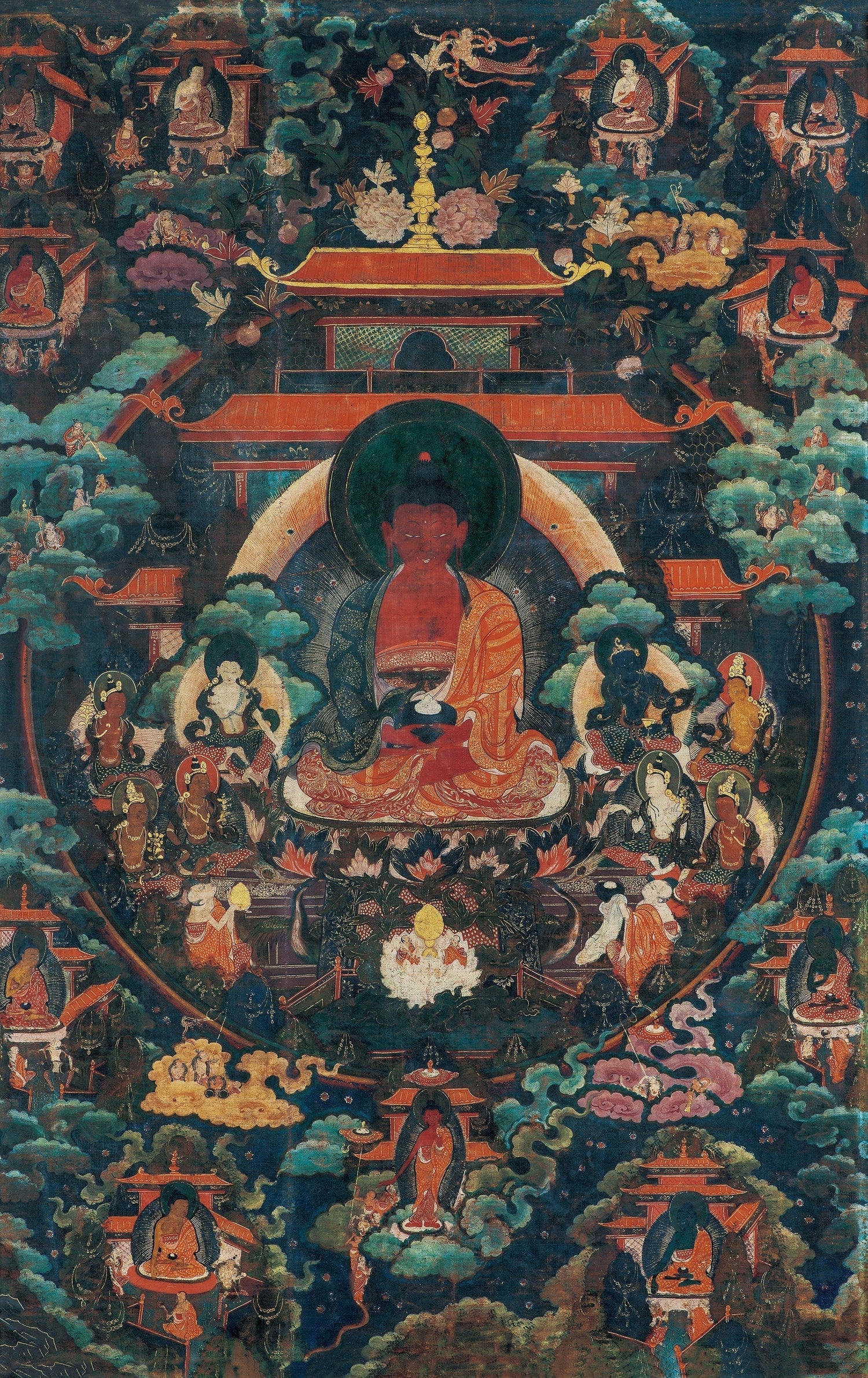
Discovering the Enlightened Amitābha Buddha: Tibetan Deity of Light & Love
🌞 Meet Amitābha Buddha — The Radiant Light of Compassion
Hey friends 😊, let’s explore Amitābha Buddha, a radiant spiritual guide who rose to prominence in 18th-century Tibetan Buddhism.
His red-gold glow represents infinite light, life, and unconditional compassion—perfect for bringing calm, prosperity, and healing to modern life.
🕯️ Explore our Thangka Pendant Collection featuring Amitābha Buddha and other deities—each hand-blessed for peace and abundance.
🛕 Who Is Amitābha Buddha?
Also known as Amitayus, the Buddha of Infinite Life, he presides over the Western Pure Land, Sukhāvatī—a paradise of harmony and enlightenment.
Tibetan thangkas from the 1700s show him in lotus posture, hands holding a nectar bowl, radiating serenity and healing.
(Image ALT: "Amitabha Buddha Tibetan Thangka – red-golden seated figure of compassion")
💫 The Energies He Brings
Compassion & Love:
Amitābha embodies unconditional care, ideal for soothing anxiety or emotional fatigue.
Protection & Guidance:
Chanting his name creates a spiritual shield—protection through peace.
Wealth & Prosperity:
His Pure Land symbolizes abundance and joy, reminding us that wealth includes purpose and peace of mind.
💎 Find Energy Bracelets and Tibetan Malas designed to channel calm and positive energy.
📖 Amitābha’s Story — The Great Vow of Light
Long before becoming a Buddha, he was the Bodhisattva Dharmākāra, who made 48 vows to build a realm where anyone could find liberation through faith.
His promise: anyone who sincerely recites his name will be reborn in the Pure Land, a place of instant spiritual growth.
“Namo Amitābha Buddha” — a mantra that opens the heart and invites light.
In Tibet, his image adorns Thangka art, blessed jewelry, and temple relics, reminding practitioners to live with compassion and gratitude.
🕰️ Why 18th-Century Tibetan Amitābha Still Matters
-
Authentic Legacy: 1700s thangkas from Central Tibet depict his Pure Land surrounded by Bodhisattvas—a living tradition of devotion.
-
Cultural Bridge: His energy connects Eastern wisdom and Western mindfulness, appealing to seekers of peace and purpose.
-
Modern Relevance: His calm presence pairs beautifully with today’s crystal energy jewelry and meditation practices.
🧘♀️ Invite ancient blessings through our High-End Rosaries—each one consecrated for harmony and focus.
🔮 How to Welcome Amitābha’s Light
1. Wear Empowered Jewelry
Choose Buddhist pendants or Tibetan bracelets infused with his energy for daily grounding.
2. Chant His Mantra
“Namo Amitābha Buddha”
Reciting daily builds compassion and inner strength.
3. Meditate with His Image
Visualize Amitābha’s red-gold light enveloping you in warmth and forgiveness.
(Image ALT: "Amitabha Buddha pendant for peace and prosperity")
🌺 Final Reflection
Amitābha Buddha isn’t just a symbol—he’s a living reminder of love without limits.
Through his vow, he offers everyone a way to transform fear into faith and struggle into serenity.
Let his light guide your meditation, your jewelry, and your journey toward peace.
🌸 Begin your practice today with our Spiritual Jewelry Collection —handcrafted symbols of compassion and protection.
🧠 F.A.Q. — Common Questions About Amitābha Buddha
Q1: What does Amitābha mean?
It means Infinite Light, symbolizing boundless compassion and wisdom.
Q2: How can I connect with Amitābha’s energy?
Chant “Namo Amitābha Buddha,” meditate with his image, or wear a blessed pendant inspired by his Pure Land energy.
Q3: What is the Pure Land (Sukhāvatī)?
It’s a spiritual paradise created by Amitābha for beings seeking peace, enlightenment, and release from suffering.
Q4: Is Amitābha related to other Buddhas?
Yes—he is part of the Five Dhyāni Buddhas, representing compassion and light in Tibetan Buddhism.
Q5: Can anyone call upon Amitābha?
Absolutely. His compassion knows no boundaries; anyone can chant his name to invite healing and peace.





